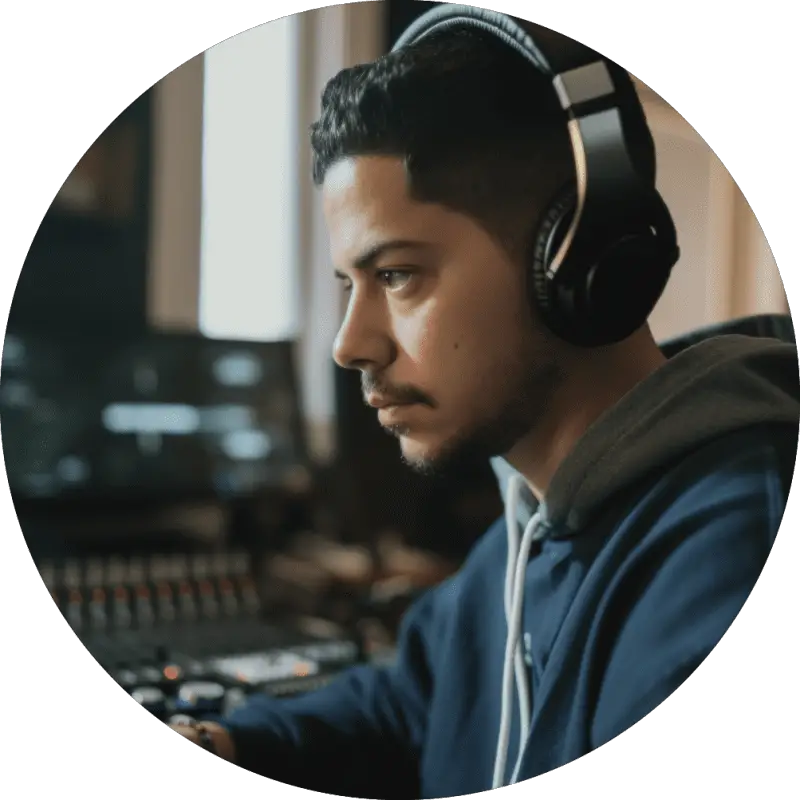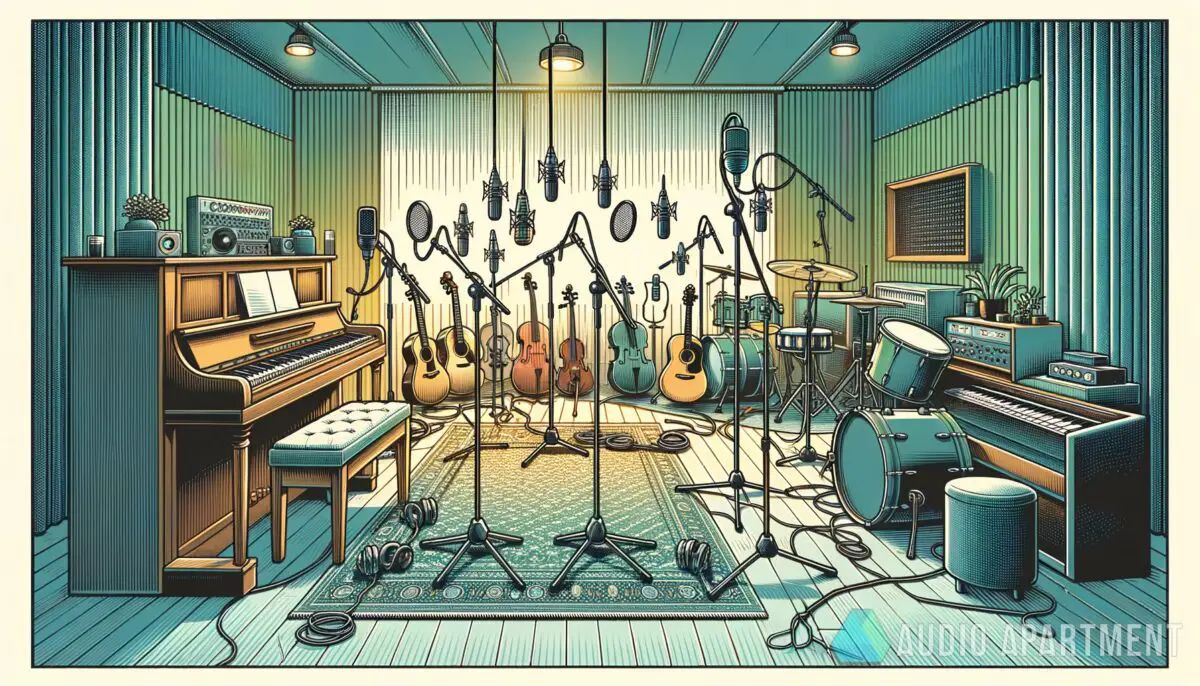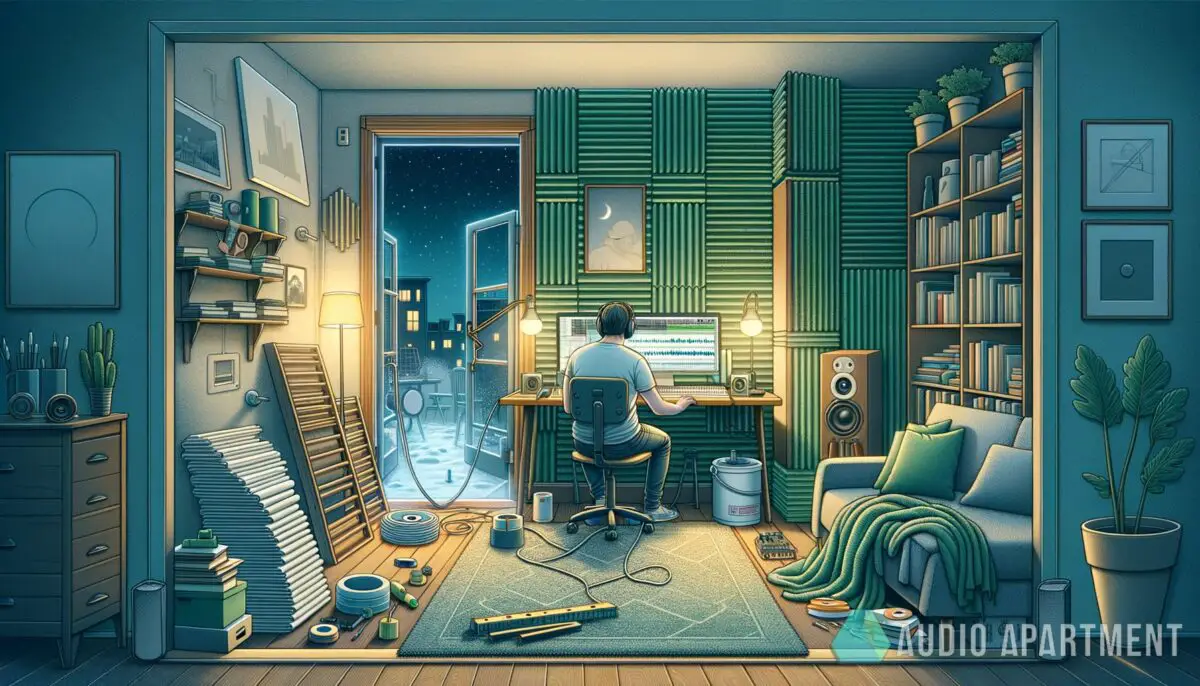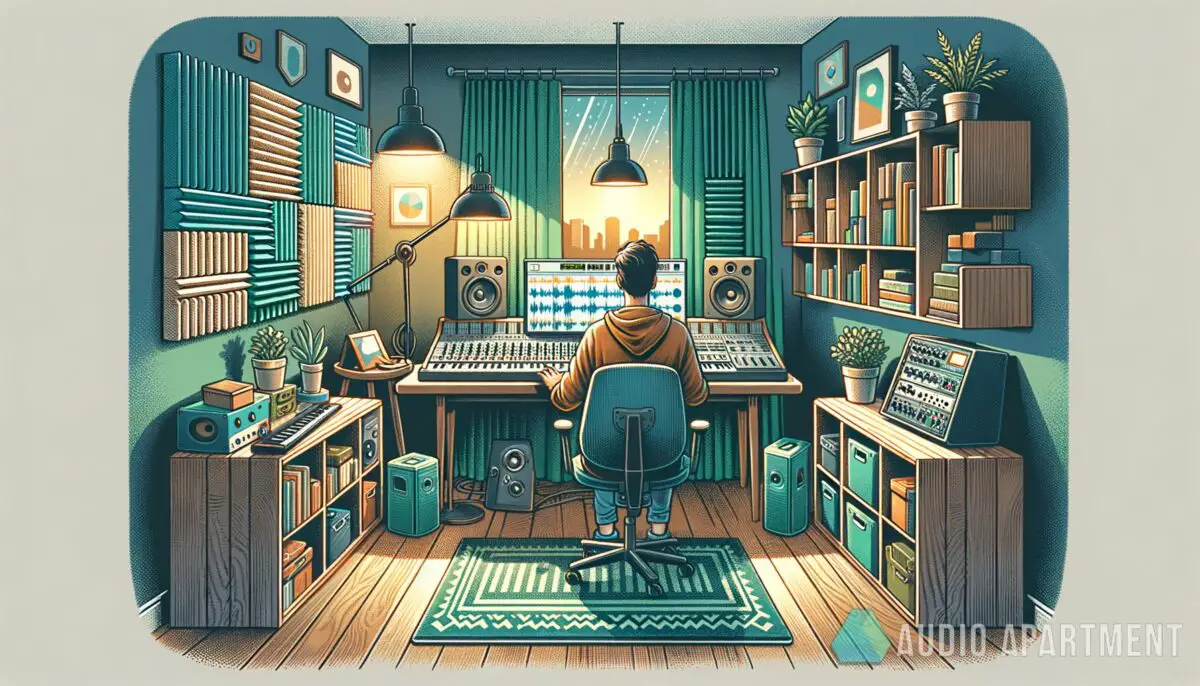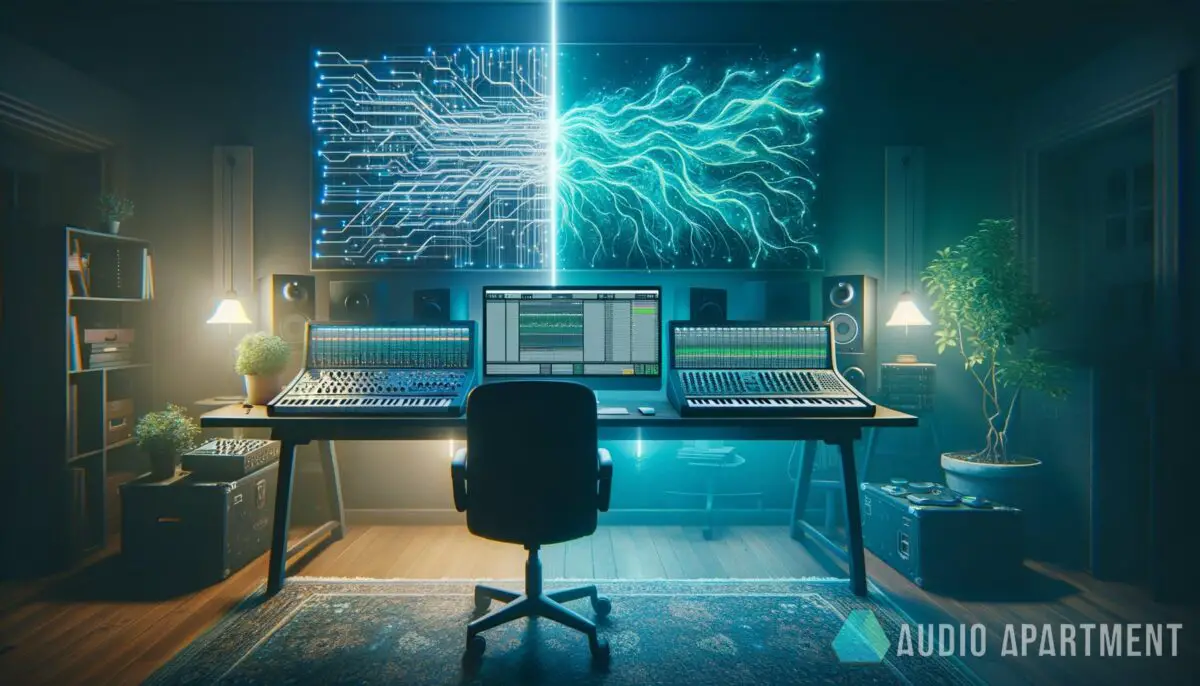Ever wondered what it takes to seamlessly weave different instruments into a harmonious symphony? Unlocking the world of orchestration might just be your next creative breakthrough. Imagine understanding the language of music so well that you could artfully delegate parts of a musical piece to each instrument in an orchestra. So what exactly does orchestration mean in music?
What does orchestration mean in music? Simply put, it’s the act of writing music for an orchestra, where you decide which instruments play which parts in a musical piece.
What is orchestration in music?
Orchestration involves writing music for an orchestra and deciding the role of each instrument in a musical piece. Think of it as transforming a simple sketch into a colorful painting. The orchestrator takes a composer’s basic sketch and changes it into a full-fledged score for an orchestra, ensemble, or choral group. And yes, sometimes the composer and orchestrator are the same person, like a one-man band.
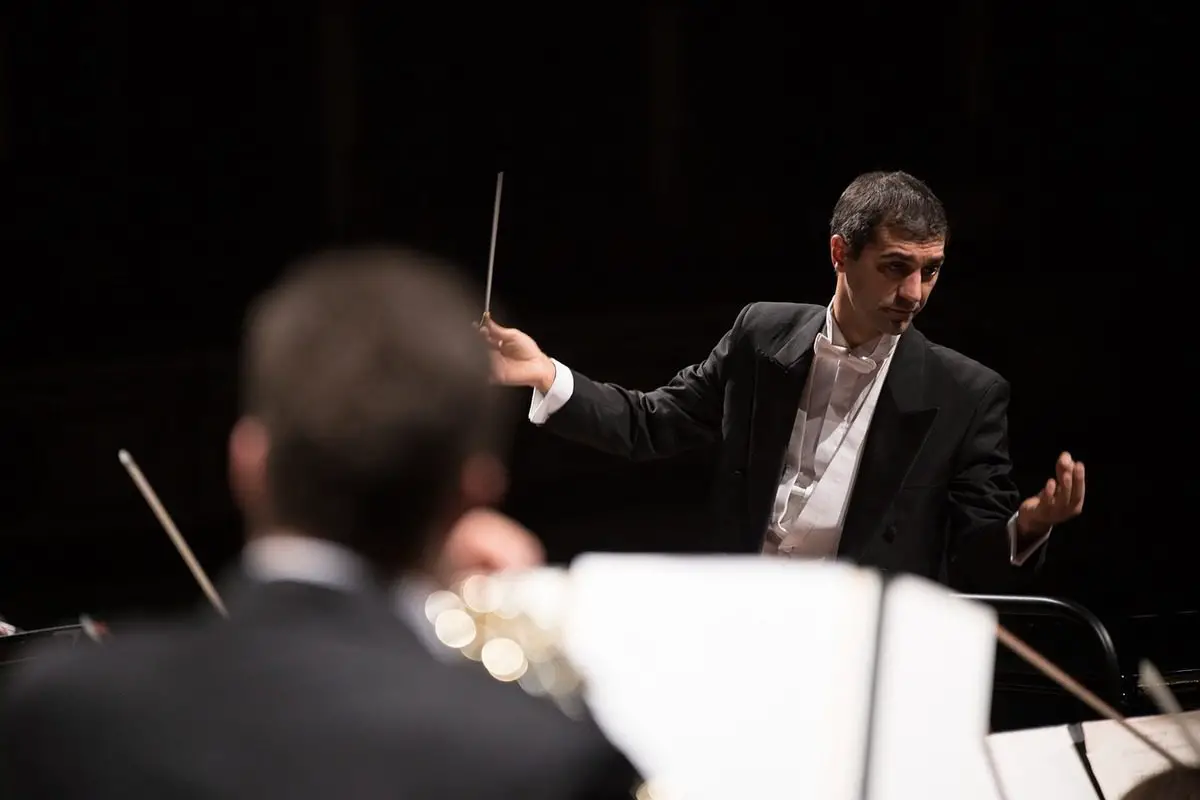
Now, you might ask, “Isn’t that the same as arranging?” Well, while both roles involve developing the composer’s work, there’s a key difference — arrangers reinvent existing music, while orchestrators enhance it without straying from the composer’s original vision. So pretty much, an orchestrator is like that trusty sidekick who’s always got your back.
AKAI Professional MPK Mini MK3

AKAI Professional MPK Mini MK3
Why should you learn orchestration?
Orchestration is important for various reasons including:
- It’s vital for music composition in various fields: We’re talking about films, TV, games, concerts, stage productions — all these areas require some killer orchestration skills.
- Enhances your street cred: Being able to write for an orchestra not only shows your versatility and talent, but it also wins you mad respect in the music industry.
- Potential for financial success: Producing orchestral compositions can lead to some pretty lucrative opportunities. Money talks, right?
What are the core principles of orchestration?
Understanding the core principles of orchestration is crucial for composers and orchestrators to ensure that their pieces are effectively conveyed to the listener. Listed below are the core principles of orchestration:
- Combining Elements:
- Simultaneously (or “Vertically”): This involves decisions regarding how instruments are layered to achieve harmony. It covers aspects such as voicing chords, doubling melody lines, and managing texture.
- Successively (or “Horizontally”): This pertains to how instruments are sequenced over time, like during orchestral crescendos.
- Voicing Chords:
- Blend: For most tonal orchestrators, blending is the default. Instruments should be combined such that they create a harmonious and integrated sound.
- Treat Each Section as Self-Contained: In tutti orchestration, the large sections (e.g., winds, brass, strings) should be treated as if they were separate units. The principles from four-part writing apply here.
- Ensure inclusion of all necessary harmonic pitches.
- Consider the number and prominence of each pitch. Overdoubling the third in a triad should be avoided.
- Mind the gaps between voices. For instance, densest packing is often in the middle, while larger gaps might be in the bass register and smaller gaps in the treble clef range.
- Chord Spacing Types: The spacing of the chords is essential for achieving the desired sound. Depending on the context, one might use interlocking voicing for a blended sound or wider spacing for distinct instrumental colors.
- Doubling Lines:
- The aim here is to find a balance between instruments and registers that are of similar strength. An example is Mozart’s 40/iii where both parts are played in each of the three octaves by both winds and strings.
- However, it’s worth noting that composers can diverge from typical blending practices for unique creative effects.
- Texture:
- The instruments chosen, their registers, and other elements can define the overall texture of a piece.
- Polyphonic Writing: Instruments and groups tend to be balanced and blended.
- Melody and Accompaniment: The melodic instrument is usually foregrounded, often at the top of the texture.
- The instruments chosen, their registers, and other elements can define the overall texture of a piece.
If I don’t have an orchestra, can I still orchestrate?
Hell, yes! Although having a full orchestra at your disposal (in case you can afford it, you know) does sound dope, the technology at our disposal today makes orchestration possible without it. What you need is some knowledge of the musical structure and some key pieces of tech.
Modern orchestrators often work electronically, substituting a full-blown orchestra with technology. You can leverage sampler hardware, software, and sample libraries to create music even without an orchestra at your disposal. So don’t worry, you can still paint masterpieces with sound on a solo canvas. Trust me, once you’ve got a handle on sample libraries and sampler hardware and software, you’ll be making music like a pro.
Here’s a quick rundown of stuff you’ll need:
- Sample Libraries: Essentially, a collection of audio files. For orchestration, these are usually single notes on a given instrument.
- Sampler Hardware and Software: Devices that allow you to trigger samples from a musical keyboard.
Here’s a little ‘do and don’t’ table for all you aspiring orchestrators out there:
| Do’s | Don’ts |
|---|---|
| Learn music theory, harmony, and ear training | Never start orchestrating without understanding basic music theory |
| Make efforts to choose the best tone color for a given musical idea | Don’t pick instruments just based on their range |
| Leverage technology | Don’t discount orchestration just because you don’t have an orchestra |
How can I get started with orchestration?
To start orchestrating, you’ll need to be decent at music theory, harmony, and ear training. Don’t sweat it though, there are tons of courses out there to get you up to speed, like Berklee Online’s music theory classes. Just like learning to play an 808, you’ve got to nail the basics before you can start jamming.
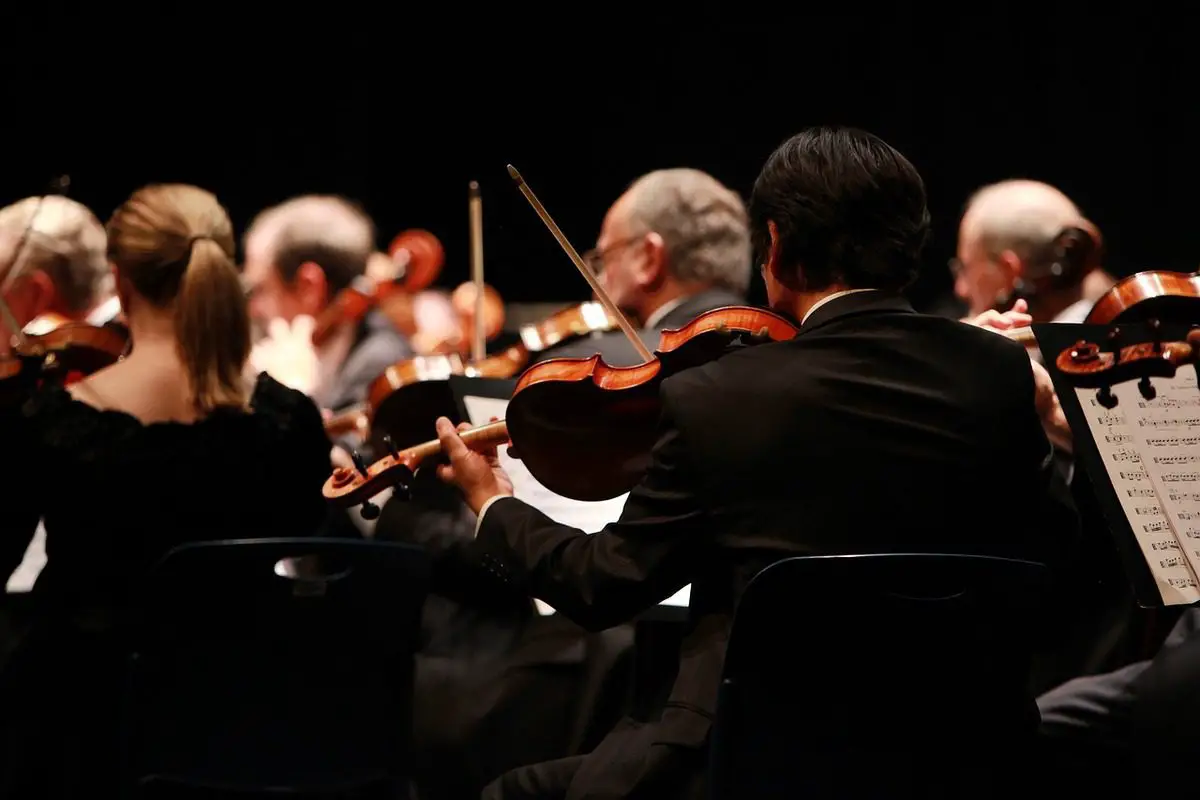
A central task in orchestration involves choosing the most fitting tone color for a musical idea. Just because two instruments can play the same range doesn’t mean they’ll complement each other. Rather, thinking along the lines of, “I’ll pair the trumpets with the trombones because they both have a bright, brassy color” is a better approach.
What are some tips for orchestration?
Here are a few tips to keep you stoked:
- Showcase the melody using different instruments in the orchestra. This can introduce variety and keep the momentum going.
- Vary the dynamic range by alternating between loud and large instrumentation and softer, more intimate moments.
- Study the masters. Dig into the scores of legends like Brahms and Tchaikovsky to understand how to write for an orchestra.
- Experiment! Play around with multiple orchestrations of the same musical passage, altering the instrumentation and dynamics.
- Engage with musicians. Understanding their instruments can provide invaluable insights into orchestration.
Frequently asked questions (FAQ)
Curiosity is the mother of invention, and I’m sure with such an intriguing topic as Orchestration in music, you’ve got a ton of questions buzzing in your head. Don’t worry, I’ve got you covered. Here are some more bite-sized pieces of information, presented as FAQs, to help you understand orchestration better.
Are there genres where orchestration is limited or not typically used?
Absolutely! While you can find some form of orchestration in most genres, in electronic dance music (EDM), for example, orchestration is often limited. Because the genre typically relies on electronically produced sounds, orchestration, in the traditional sense, is less prevalent.
Can I become an orchestrator without any formal music training?
While it’s not impossible, it can be pretty challenging. Many of the skills required in orchestration, like a deep understanding of musical structure and knowledge of different instruments, are typically learned through formal music training. However, with dedication and the right resources, you could certainly teach yourself.
If I can’t read music, can I still orchestrate?
Yes, but it will make your task considerably tougher. Being able to read music is a major part of being an orchestrator. If you’re serious about orchestration, it would be beneficial to invest some time in learning to read music.
Conclusion
Alright, folks, that wraps up our tour of the Orchestration Express. We danced to the tune of assigning instruments, painted with tone colors, and navigated the tech maze. Sure, we hit a few sour notes along the way, but hey, you’ve got to face the music, right?
Did I cover everything you wanted to know? Let me know in the comments section below. I read and reply to every comment. If you found this article helpful, share it with a friend, and check out my full blog for more tips and tricks on orchestration in music. Thanks for reading, and don’t stop orchestrating!
Key takeaways
This article covered orchestration in music and its relevance to music production. Here are some key takeaways:
- Orchestration is the art of assigning different parts of a musical composition to specific instruments.
- It involves a deep understanding of the musical structure and the characteristics of individual instruments.
- Orchestration enhances the emotional content and tone color of the music.
- With the right technology, orchestration can be executed even without a full orchestra.
- Orchestration is a valuable skill, opening up opportunities in various fields like films, TV, games, concerts, and stage productions.

